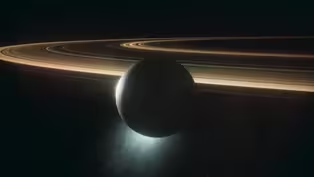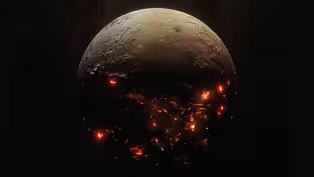
This Tiny Moon Is a Volcanic Powerhouse
Clip: Season 51 Episode 11 | 2m 45sVideo has Closed Captions
Io’s intense volcanic activity defies all expectations.
Jupiter’s small moon Io is the most volcanically active body in our solar system, with constant eruptions reshaping its surface daily.
Problems playing video? | Closed Captioning Feedback
Problems playing video? | Closed Captioning Feedback
National Corporate funding for NOVA is provided by Carlisle Companies and Viking Cruises. Major funding for NOVA is provided by the NOVA Science Trust, the Corporation for Public Broadcasting, and PBS viewers.

This Tiny Moon Is a Volcanic Powerhouse
Clip: Season 51 Episode 11 | 2m 45sVideo has Closed Captions
Jupiter’s small moon Io is the most volcanically active body in our solar system, with constant eruptions reshaping its surface daily.
Problems playing video? | Closed Captioning Feedback
How to Watch NOVA
NOVA is available to stream on pbs.org and the free PBS App, available on iPhone, Apple TV, Android TV, Android smartphones, Amazon Fire TV, Amazon Fire Tablet, Roku, Samsung Smart TV, and Vizio.
Buy Now

NOVA Labs
NOVA Labs is a free digital platform that engages teens and lifelong learners in games and interactives that foster authentic scientific exploration. Participants take part in real-world investigations by visualizing, analyzing, and playing with the same data that scientists use.Providing Support for PBS.org
Learn Moreabout PBS online sponsorship- [Narrator] About the size of our moon, Io orbit's closer to Jupiter than any other moon of its size.
Since 2016, the space probe Juno has been our eyes on Jupiter and its moons.
With an elongated orbit, it has made regular flybys past Io, witnessing violent eruptions, which shoot out columns of gas and dust that reach far out into space and send rivers of lava pouring across the landscape, creating a surface dotted with lakes of lava.
Io is a volcanic powerhouse, defying all expectations.
- Considering how small Io is, the heat sources like we have on earth, the heat of formation and the radioactive decay, those should be essentially completely gone on Io by now.
- This little, tiny, small world of Io, you'd expect it to be geologically inactive.
Instead, it's the most volcanically active body in our solar system.
That's a surprise.
- [Narrator] Eruptions continue day in, day out across the entire surface, a world like no other in our solar system.
But similarities can be found by taking a closer look beneath the surface inside volcanoes here on Earth.
(text beeps) Astrophysicist Jen Gupta is entering a chamber created by a volcanic eruption over 4,000 years ago.
- The incredible thing about this place is that as the magma drained away, it left behind these colors that we can see here on the walls from elements and minerals that were dragged up from the interior of the earth during that volcanic eruption.
The one that immediately grabs my attention is the yellow.
This is from sulfates and sulfur, and these are the exact same colors that we see covering the entire surface of Io.
- [Narrator] Images of Io are dominated by its yellow surface, created by the same sulfates and sulfur that line the chamber walls here in Iceland.
- The scale of this place is just astonishing, and to think that there are chambers like this under the surface of Io, filled with molten magma ready to erupt out.
It's easy to think that Earth, our home planet, is completely unique.
But the more we discover about the solar system, the more we see these remarkable similarities like having volcanoes on Io.
Could This Icy Moon’s Ocean Support Life?
Video has Closed Captions
Clip: S51 Ep11 | 1m 21s | Hydrothermal vents in Enceladus’ ocean may hold the promise of life. (1m 21s)
Enceladus: A Frozen Moon With Explosive Eruptions
Video has Closed Captions
Clip: S51 Ep11 | 1m 56s | Enceladus’ small size and icy surface is no limitation to its extreme volcanism. (1m 56s)
Solar System: Volcano Worlds Preview
Video has Closed Captions
Preview: S51 Ep11 | 30s | Discover the powerful volcanic eruptions that have shaped worlds across our solar system. (30s)
Providing Support for PBS.org
Learn Moreabout PBS online sponsorship
- Science and Nature

Capturing the splendor of the natural world, from the African plains to the Antarctic ice.













Support for PBS provided by:
National Corporate funding for NOVA is provided by Carlisle Companies and Viking Cruises. Major funding for NOVA is provided by the NOVA Science Trust, the Corporation for Public Broadcasting, and PBS viewers.





